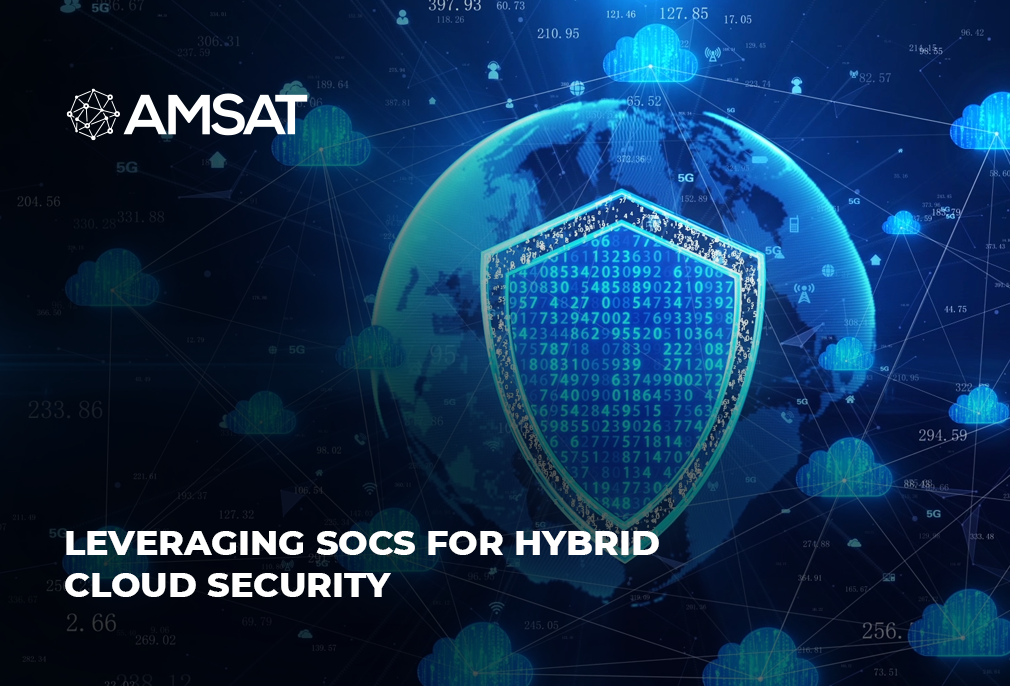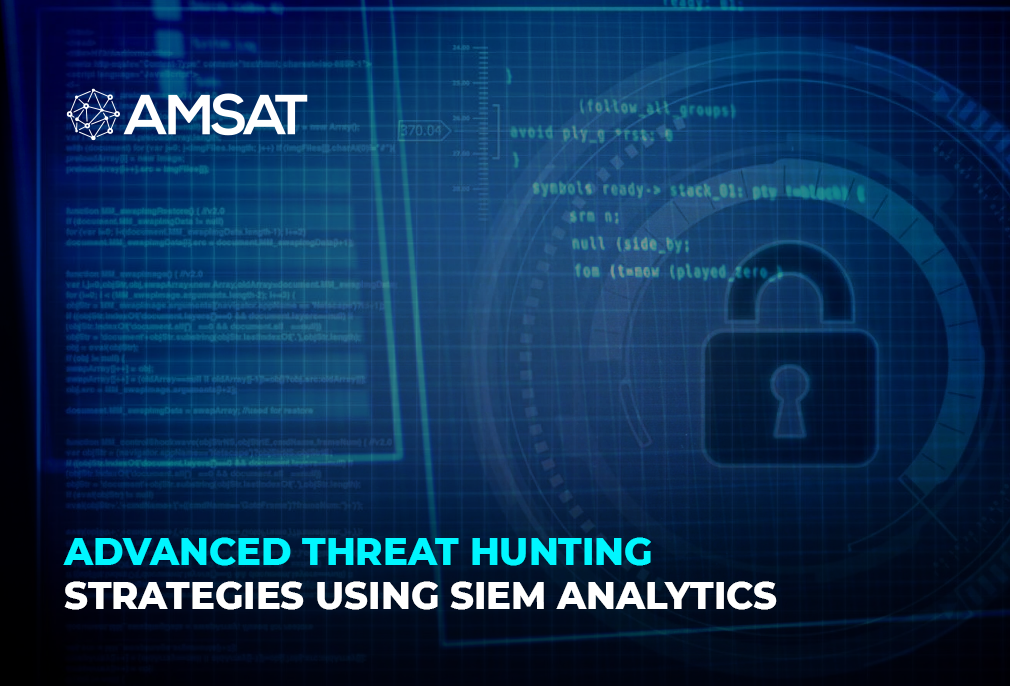Latest Blogs

By AMSAT Nov 3, 2023
Leveraging SOCs for Hybrid Cloud Security
Introduction
There are many ways to thwart cyberattacks, thanks to the innovation in the field of cybersecurity. One of the most effective methods to foil cybercriminals’ designs on your organization is the establishment of security operations centers (SOCs). These SOCs can detect and respond to threats swiftly and effectively, by monitoring and analyzing security data from different sources.
In today’s hybrid cloud environment, SOCs need to be able to monitor and defend both on-premises and cloud-based assets. This can be a challenge, as cloud platforms have their own unique security requirements.
However, there are a number of ways to leverage SOCs to improve hybrid cloud security. This blog post will shed light on some of the key considerations for implementing a hybrid cloud SOC, as well as some best practices for cloud security operations.
Hybrid Cloud SOC Considerations
When designing a hybrid cloud SOC, there are a number of factors to consider, including:
- Visibility: The SOC needs to have visibility into all of the organization’s assets, both on-premises and in the cloud. This can be achieved by deploying a variety of security tools and technologies, such as log management systems, SIEM solutions, and security information and event management (SIEM) tools.
- Integration: The SOC needs to be integrated with the organization’s cloud security tools and platforms. This will allow the SOC to collect and analyze security data from all sources in a unified manner.
- Automation: The SOC should use automation to streamline security operations and reduce the manual workload of security analysts. This can be achieved by using tools such as security orchestration, automation, and response (SOAR) platforms.
- Threat intelligence: The SOC should leverage threat intelligence to improve its ability to detect and respond to threats. Threat intelligence can be obtained from a variety of sources, such as commercial threat intelligence providers, open-source intelligence feeds, and government agencies.
Best Practices for Cloud Security Operations
Here are some best practices for cloud security operations:
- Use a cloud security posture management (CSPM) solution: A CSPM solution can help you to assess and monitor your cloud security posture. It can also identify and remediate security vulnerabilities in your cloud environment.
- Use a cloud workload protection platform (CWPP): A CWPP solution can help you to protect your cloud workloads from attack. It can also detect and respond to malicious activity in your cloud environment.
- Use a cloud access security broker (CASB): A CASB can help you to control access to your cloud resources and protect your data from unauthorized access.
- Use a cloud identity and access management (IAM) solution: A cloud IAM solution can help you to manage user access to your cloud resources.
- Use a cloud security information and event management (SIEM) solution: A cloud SIEM solution can help you to collect and analyze security data from your cloud environment. It can also detect and respond to threats in your cloud environment.

Incident Response in the Cloud
When responding to an incident in the cloud, it is important to follow a well-defined process. This process should include the following steps:
- Identify the incident: The first step is to identify the incident and its scope. This can be done by analyzing security data and logs.
- Contain the incident: Once the incident has been identified, it is important to contain it to prevent further damage. This may involve isolating affected systems or taking other steps to mitigate the impact of the attack.
- Eradicate the incident: Once the incident has been contained, the next step is to eradicate it. This may involve removing malware, patching vulnerabilities, or other remediation steps.
- Recover from the incident: Once the incident has been eradicated, the final step is to recover from it. This may involve restoring systems from backup or taking other steps to return the environment to its normal state.
Challenges of Securing Hybrid Environments
Hybrid cloud environments are becoming increasingly popular as organizations look to take advantage of the benefits of both on-premises and cloud computing. However, securing hybrid cloud environments can be challenging due to a number of factors, including:
- Complexity: Hybrid cloud environments are often complex and involve a variety of different technologies and architectures. This can make it difficult to implement and manage security controls consistently across the environment.
- Visibility: It can be difficult to gain visibility into all of the assets and traffic in a hybrid cloud environment. This can make it difficult to detect and respond to security threats.
- Compliance: Organizations need to comply with a variety of regulations when it comes to data security. This can be challenging in a hybrid cloud environment, where data is often distributed across multiple platforms and locations.
Incident Response Case Study Analysis
One example of how the SOC has improved the company’s security posture is in the area of incident response. In the past, the company would often take days or even weeks to respond to a security incident. However, the SOC team is now able to respond to security incidents within minutes or hours.
For example, one day the SOC team received an alert from the IDS system that indicated that there was suspicious traffic on one of the company’s cloud-based servers. The SOC team immediately investigated the alert and determined that the server had been compromised by a malware infection. The SOC team was able to quickly isolate the server and prevent the malware from spreading to other servers. The SOC team then worked to remove the malware from the server and restore the server to a clean state.
Conclusion
By following the best practices mentioned in this blog post, organizations can leverage SOCs to improve their hybrid cloud security. By implementing a hybrid cloud SOC, organizations can gain visibility into their entire security posture, improve their ability to detect and respond to threats, and streamline their security operations.
TAGS
- Cyber Security
- Cloud Security
Recent Blogs
Ready to Get Started?
Our specialists are ready to tailor our security service solutions to fit the needs of your organization.










